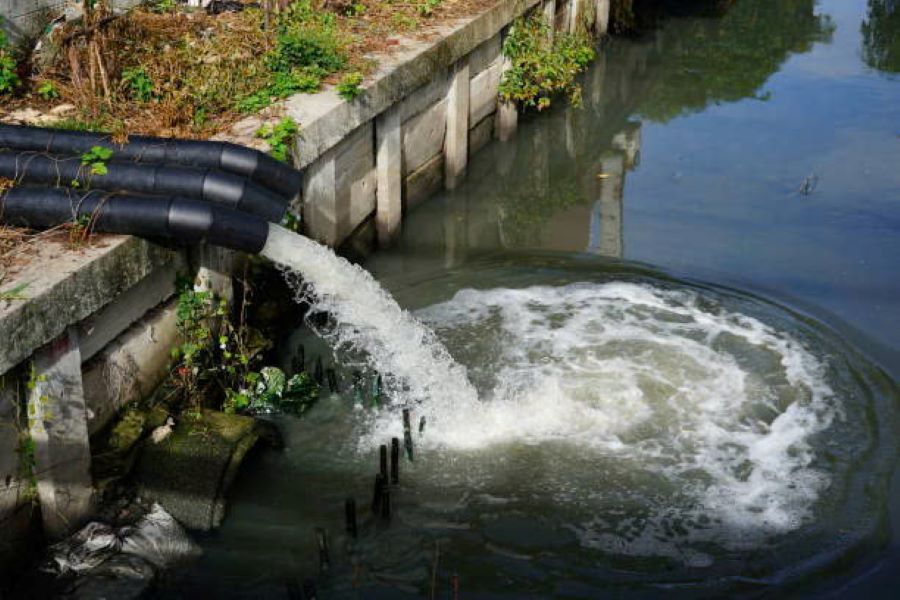Today, classifying wastewater based on its origin plays a crucial role in effective wastewater management and treatment. Each type of wastewater – whether domestic, industrial, or medical – has distinct characteristics, pollutant compositions, and requires different treatment methods. Understanding the classification of wastewater by source not only helps organizations and businesses comply with environmental regulations but also contributes to water resource protection and sustainable development. Let’s explore the different types of wastewater and how they are classified.
Classifying wastewater by origin helps determine the nature and level of contamination before treatment. Each source of wastewater has specific characteristics – for example, industrial wastewater often contains heavy metals and toxic chemicals, while domestic wastewater primarily contains organic matter and microorganisms. Understanding the origin is the foundation for selecting an appropriate treatment method that ensures efficiency and environmental safety.
Beyond treatment needs, classification provides economic and management benefits. When separated correctly, certain wastewater streams can be reused for irrigation, equipment cooling, or biogas energy production. At the same time, it enables authorities to monitor, regulate, and implement policies that reduce pollution toward sustainable development goals.

Classifying wastewater by origin helps select appropriate treatment technology to ensure efficiency and environmental safety.
Wastewater classified by chemical characteristics contains dissolved and undissolved compounds such as acids, bases, salts, heavy metals, and toxic organic compounds. These mainly originate from industrial, agricultural, and domestic activities. Chemical substances in wastewater may react with each other, producing new compounds that alter water properties and negatively impact aquatic organisms and natural water quality.
This group is defined by temperature, color, turbidity, odor, and suspended solid content. These characteristics often arise from household activities, production processes, or runoff carrying sediment and debris. Evaluating and controlling physical indicators helps determine baseline pollution levels and select suitable treatment processes to ensure efficiency and cost optimization.
Domestic wastewater is the most common type, generated from human activities such as cooking, bathing, washing, and sanitation. It contains organic matter, grease, suspended solids, and pathogenic microorganisms. Although less hazardous than industrial wastewater, improper discharge can still contaminate surface and groundwater sources.
Advanced biological treatment technologies such as SBR, MBR, AAO, and trickling filters are commonly used to remove organic matter and nutrients while reducing harmful microorganisms. These solutions are efficient, space-saving, stable in operation, and adaptable from household scale to centralized residential systems, supporting environmental protection and sustainable development.
Industrial wastewater is generated during production activities in factories or industrial zones. Its composition varies by industry, such as textile dyeing, food processing, metallurgy, or chemical manufacturing. It often contains heavy metals, industrial oils, and toxic, persistent organic pollutants. Therefore, treatment requires advanced technologies to meet environmental discharge standards and protect ecosystems.
Treatment technologies are selected based on the specific wastewater characteristics. Common solutions include chemical–physical treatment, biological treatment, and advanced membrane filtration to remove contaminants and heavy metals. Methods such as coagulation–flocculation, Fenton, SBR, MBR, RO, and Advanced Oxidation Processes (AOPs) are widely applied due to their high efficiency.
Livestock wastewater comes from cleaning barns, animal bathing, manure, and urine. It contains very high levels of organic matter (BOD, COD), ammonia, nitrogen, phosphorus, pathogenic microorganisms, and strong odors. If discharged untreated, it can severely contaminate water resources, degrade soil, and impact community health.
Biological methods such as UASB digesters, anaerobic–aerobic ponds, Biogas systems, SBR, and MBR are commonly implemented to break down organic pollutants and control odor. System design must consider livestock density, wastewater volume, and available land to ensure cost-effective long-term performance.
Medical wastewater is a special category due to containing infectious agents such as bacteria, viruses, disinfectants, and pharmaceuticals. It originates from hospitals, clinics, laboratories, and healthcare facilities. Without proper collection and treatment, medical wastewater can cause cross-contamination and serious environmental impacts.
Treatment commonly combines chemical–physical processes and biological treatment, alongside stringent disinfection. Systems like AAO, SBR, MBR paired with chlorine, ozone, or UV disinfection ensure biological safety before discharge.
Municipal wastewater is a mixture of domestic wastewater, commercial wastewater, service wastewater, and partially stormwater runoff. It contains organic pollutants, microorganisms, grease, and small debris. Centralized sewage and treatment systems in cities play a vital role in protecting public health and water quality.
Technologies such as AAO, SBR, MBR, and constructed wetlands are used to remove organic matter, nutrients, and microorganisms. Reuse applications (e.g., irrigation, street cleaning, landscape water supply) are increasingly encouraged to conserve water resources and support sustainable urban development.
The above overview of wastewater classification provides insights into pollutant characteristics to select the appropriate treatment solution. Because each wastewater type has distinct properties, system design, construction, and operation must be performed by experienced professionals.
With many years of experience in domestic, industrial, medical, and livestock wastewater treatment,
Dai Nam Environment Solutions Co., Ltd. is confident in providing optimal solutions with stable operation, reasonable investment cost, appropriate land area, and guaranteed water quality that meets current QCVN discharge standards.
Dai Nam specializes in wastewater treatment for domestic, industrial, medical, and livestock sectors.
If you need consultation or system design,
Contact Dai Nam at 0909 378 796 for dedicated support and the most suitable solution.